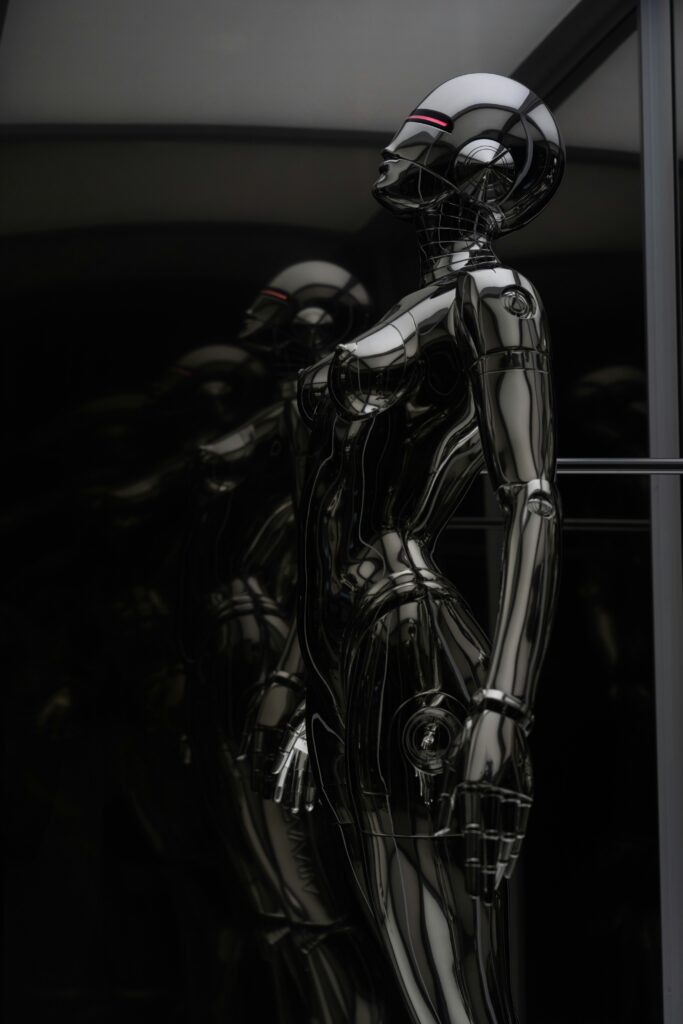What AI Can’t Do: Understanding the Limitations of Artificial Intelligence 2025
Have you ever asked ChatGPT to write a joke only to receive something that falls completely flat? Or perhaps you’ve witnessed an AI image generator create a person with six fingers? Despite the impressive advances in artificial intelligence, these systems still have significant blind spots and limitations. According to a recent Stanford study, even the most advanced AI systems misinterpret basic physical scenarios 46% of the time—essentially performing worse than a human toddler.
In this comprehensive guide, we’ll explore what AI can’t do, uncovering its limitations and providing a balanced perspective on its capabilities and shortcomings. From creativity to common sense reasoning, we’ll examine the boundaries of today’s AI technology and consider what this means for our AI-integrated future.
Table of Contents
Defining AI and Its Scope
Before diving into AI’s limitations, it’s important to understand what we mean by “artificial intelligence.” At its core, AI refers to computer systems designed to perform tasks that typically require human intelligence—such as visual perception, speech recognition, decision-making, and language translation.
AI generally falls into three categories:
- Narrow AI (Weak AI): Systems designed for specific tasks like facial recognition or language translation. This is what we encounter in our daily lives.
- General AI (Strong AI): Hypothetical systems with comprehensive human cognitive abilities—able to apply intelligence to any problem.
- Super AI: A theoretical form of AI surpassing human intelligence across all domains.
Currently, all existing AI systems are narrow AI, which, despite impressive capabilities in specific domains, face significant limitations when operating outside their training parameters.
Core Limitations: What AI Can’t Do
Creativity and Original Thought
While AI can generate content that appears creative, it cannot produce truly original ideas. AI systems like DALL-E, Midjourney, and Stable Diffusion synthesize existing patterns rather than creating genuinely new concepts.
Example: When asked to create a “completely new animal never seen before,” AI image generators typically combine features of existing animals rather than inventing something truly novel. Research from the Creative AI Lab at King’s College London found that human judges could identify AI-generated creative work with 73% accuracy, noting its derivative nature.
AI can remix, recombine, and extrapolate from its training data, but it cannot experience the spark of true inspiration or the “eureka moment” that drives human creativity.
Common Sense Reasoning
One of the most significant weaknesses of AI is its lack of common sense understanding—the intuitive knowledge that humans develop about how the world works.
Example: In a 2023 test, a leading AI model was asked, “If I put a book in the refrigerator, will it be cold when I take it out?” The AI correctly answered “yes.” However, when asked, “If I put a book in the refrigerator, will it spoil?” it incorrectly suggested the book might “spoil” in some sense—demonstrating a failure to understand fundamental properties of objects.
This limitation stems from AI’s inability to truly understand context and causality. While humans intuitively grasp that books don’t spoil like food, AI systems lack this inherent understanding of the physical world.
Emotional Intelligence and Empathy
Despite advances in sentiment analysis, AI cannot truly understand or experience emotions. AI systems can be programmed to recognize emotional cues or mimic empathetic responses, but they lack genuine emotional understanding.
Example: Healthcare chatbots designed to provide mental health support can recognize keywords indicating distress and offer pre-programmed responses, but they cannot truly empathize with a patient’s suffering or provide the human connection essential for therapeutic relationships.
This limitation has significant implications for fields like:
- Customer service, where emotional understanding is often crucial
- Healthcare, particularly in psychological support
- Education, where emotional connection facilitates learning
Adaptability to Unforeseen Circumstances
AI systems excel at pattern recognition within their training data but struggle when confronted with novel situations. Unlike humans, who can adapt reasoning to new contexts, AI falters when facing scenarios outside its training parameters.
Example: An autonomous vehicle trained primarily on clear weather driving data might fail in unexpected conditions like heavy hail or unusual road obstacles. The 2016 Tesla autopilot crash—where the system failed to distinguish a white truck against a bright sky—illustrates this weakness of AI.
This limitation becomes particularly concerning in critical applications like:
- Emergency response systems
- Medical diagnosis for rare conditions
- Security systems facing novel threats
Critical Thinking and Ethical Judgments
AI systems lack the ability to make nuanced ethical judgments or engage in critical thinking that challenges their programming. They follow algorithms rather than principles and cannot weigh complex moral considerations.
Example: AI content moderation systems often struggle with context-dependent decisions. They might flag artistic nudity while missing subtly harmful content, or censor legitimate political discourse while allowing misleading information that doesn’t trigger specific keywords.
This shortcoming becomes particularly problematic when:
- Making context-dependent ethical decisions
- Evaluating complex social situations
- Distinguishing between malicious and benign content
True Consciousness and Self-Awareness
Perhaps the most fundamental limitation of AI is its lack of consciousness. Despite anthropomorphic interfaces and language that mimics self-awareness, AI systems have no subjective experience or sense of self.
Example: When an AI assistant says, “I’m happy to help,” it doesn’t experience happiness. It’s executing a programmed response pattern without any internal emotional state or awareness.
This philosophical limitation raises important questions about:
- The nature of machine “understanding”
- The ethical status of increasingly sophisticated AI
- The unbridgeable gap between simulation and experience
Healthcare Industry Limitations
In healthcare specifically, AI faces additional challenges that highlight its limitations:
Example: Diagnostic AI tools like those analyzing medical images can identify patterns in data but struggle with unusual presentations of diseases or rare conditions absent from training data. A 2022 study in Nature Medicine found that diagnostic AI systems showed a 60% reduction in accuracy when evaluating demographic groups underrepresented in training data.
AI healthcare limitations include:
- Inability to consider a patient’s full life context
- Challenges integrating subjective symptom reporting
- Difficulties with rare disease identification
- Ethical complexities around treatment recommendations
Things AI Can’t Do Yet
While acknowledging AI’s current limitations, it’s important to recognize areas where progress is being made:
Evolving Common Sense Capabilities
Researchers are developing approaches to endow AI with better common-sense reasoning. Projects like ATOMIC and ConceptNet aim to build knowledge graphs representing everyday causality and object relationships.
Improving Contextual Understanding
Large language models continue to improve their ability to maintain context across longer conversations and texts, though true contextual understanding remains elusive.
Enhanced Adaptability
Transfer learning techniques are helping AI systems better adapt knowledge from one domain to another, potentially improving performance in novel situations.
Addressing the Risks and Ethical Concerns
Understanding what AI can’t do helps identify its risks and ethical challenges:
Algorithmic Bias
AI systems often reflect and amplify biases present in their training data. Without the moral reasoning to identify unfairness, these systems can perpetuate discrimination.
Example: Facial recognition systems have consistently shown lower accuracy rates for women and people with darker skin tones. A 2019 study by the National Institute of Standards and Technology found disparity in false match rates across different demographic groups.
Privacy Concerns
AI’s inability to understand the ethical implications of privacy means systems must be carefully designed with privacy protections built in, rather than expecting the AI to make appropriate judgments.
Job Displacement
While AI can automate specific tasks, its limitations suggest a future of human-AI collaboration rather than wholesale replacement of human workers.
AI vs. Human Intelligence: A Comparative Analysis
| Capability | Human Intelligence | Artificial Intelligence |
|---|---|---|
| Creativity | Can generate truly novel ideas | Recombines existing patterns |
| Common Sense | Intuitive understanding of the world | Limited to programmed rules and training data |
| Adaptability | Can reason in novel situations | Performs best within training parameters |
| Emotional Intelligence | Experiences and understands emotions | Can recognize but not truly understand emotions |
| Ethical Reasoning | Can make nuanced moral judgments | Follows programmed rules without understanding |
| Consciousness | Self-aware with subjective experience | No internal experience |
| Learning Efficiency | Can learn from few examples | Typically requires large datasets |
Humans possess unique capabilities that AI is unlikely to replicate soon, including:
- Wisdom derived from lived experience
- Intuition based on complex pattern recognition
- Cultural and social intelligence
- Creativity driven by personal meaning and purpose
Conclusion
Understanding what AI can’t do is just as important as recognizing its capabilities. The limitations of artificial intelligence—from its lack of true creativity to its absence of consciousness—define both its current utility and future development.
By acknowledging these shortcomings, we can:
- Design more effective human-AI partnerships
- Develop realistic expectations for AI implementation
- Focus research on addressing fundamental limitations
- Implement appropriate safeguards and oversight
Rather than seeing AI as a replacement for human intelligence, we should view it as a powerful tool that complements our uniquely human capabilities. The future lies not in AI that mimics everything humans do, but in thoughtful integration that leverages the strengths of both artificial and human intelligence.
Want to learn more about responsible AI development? Explore our other articles on AI ethics or share this post with colleagues interested in the future of artificial intelligence.

